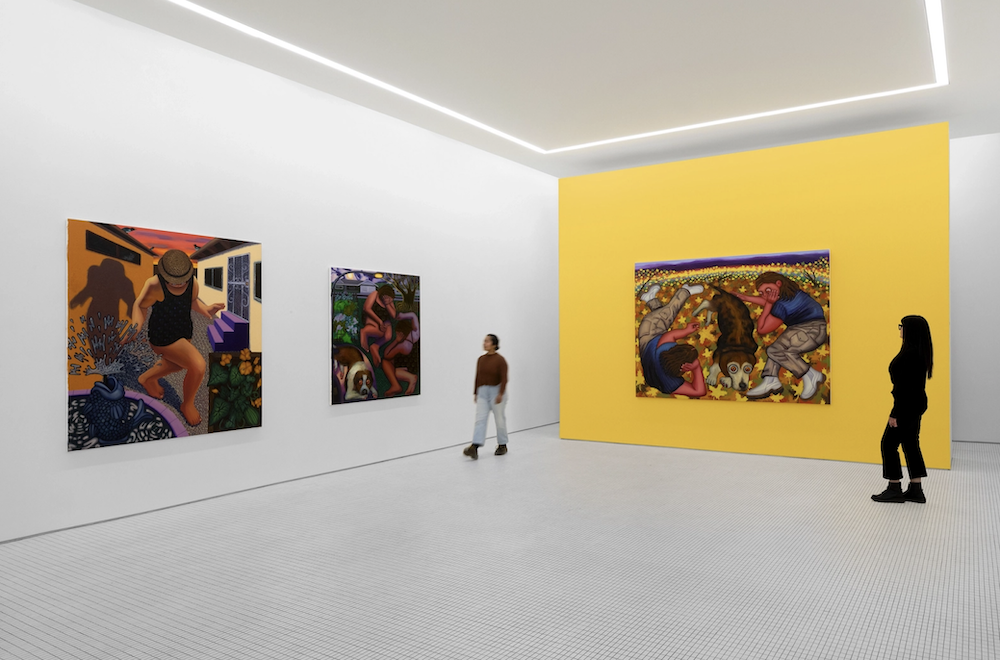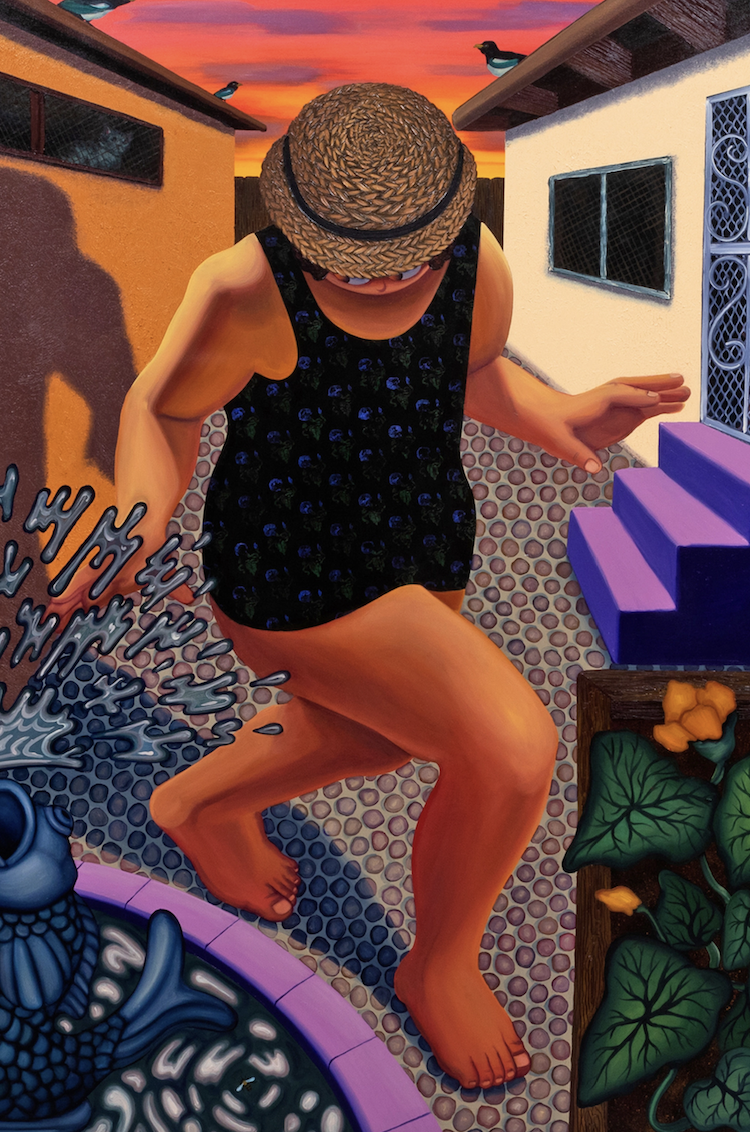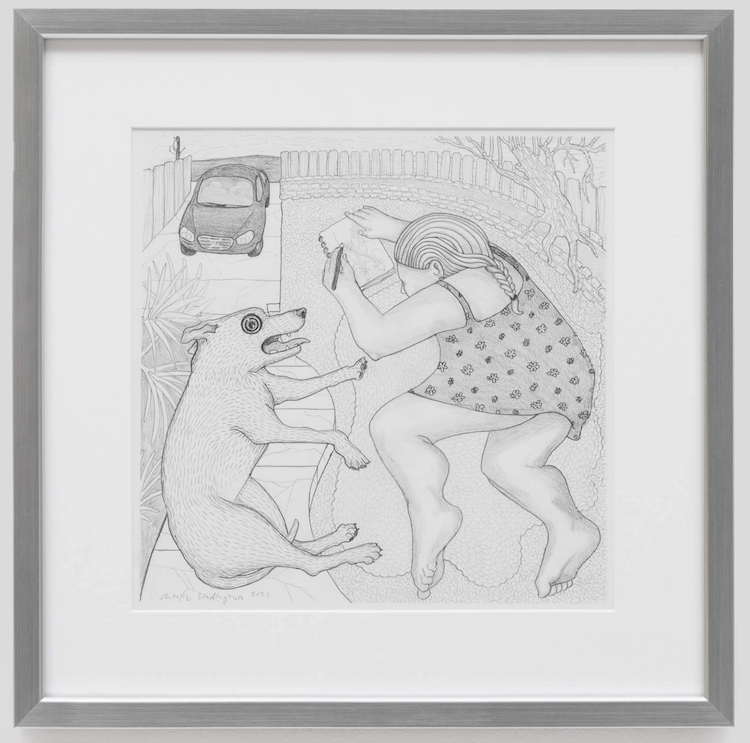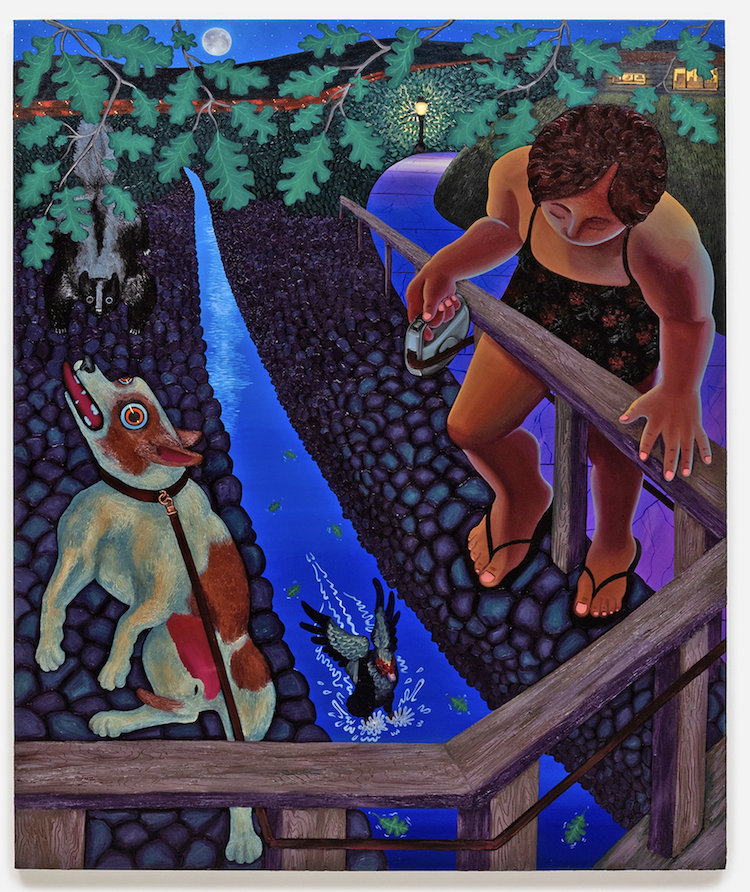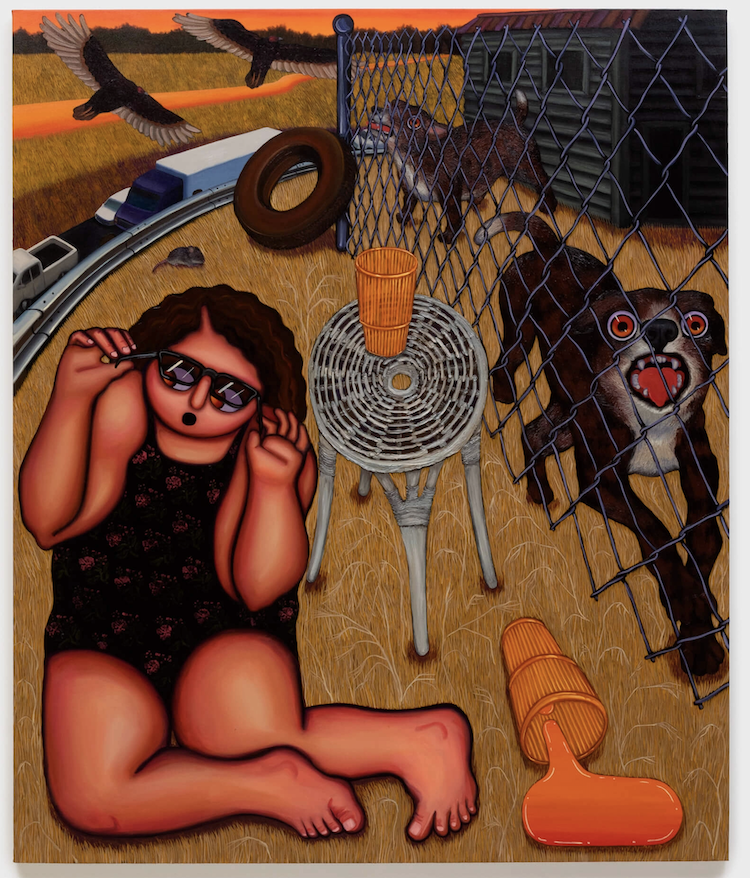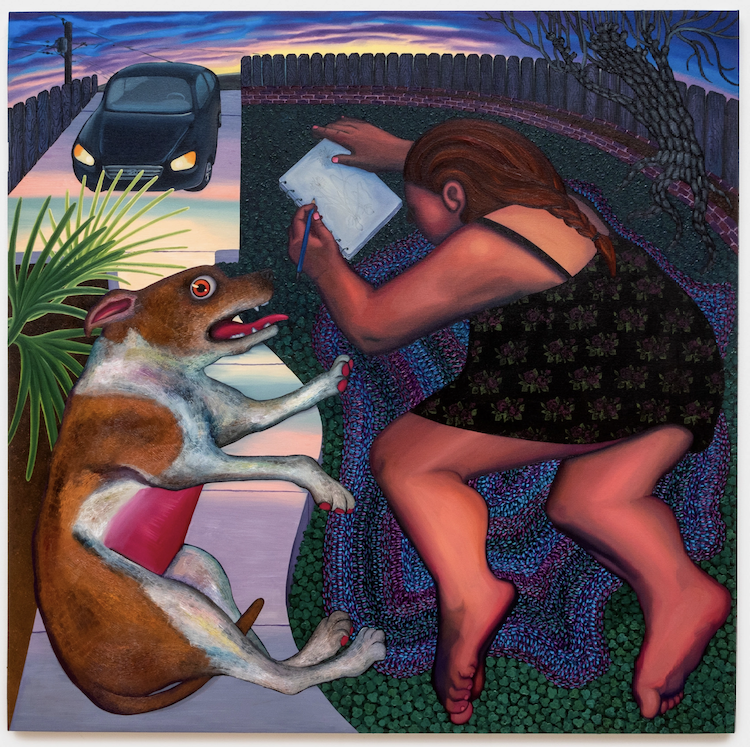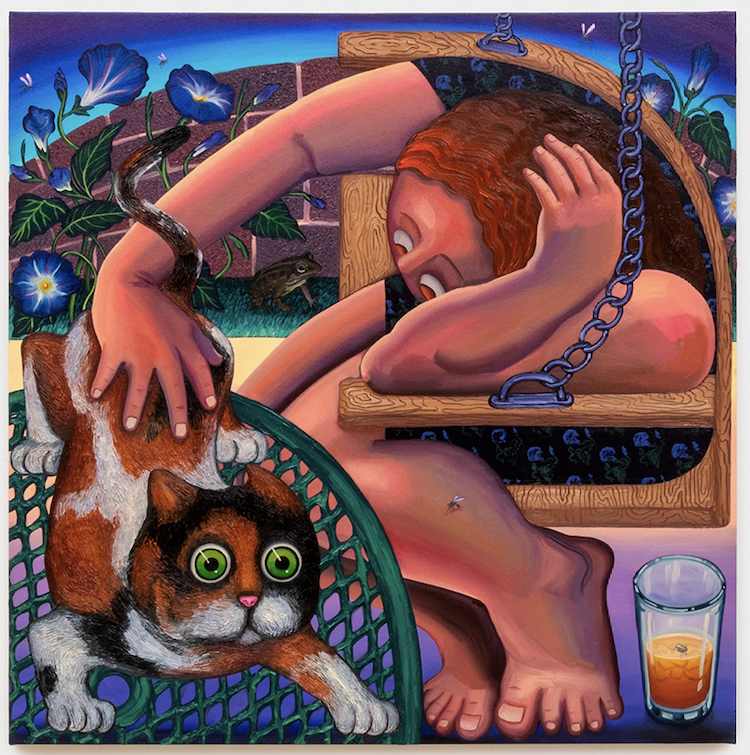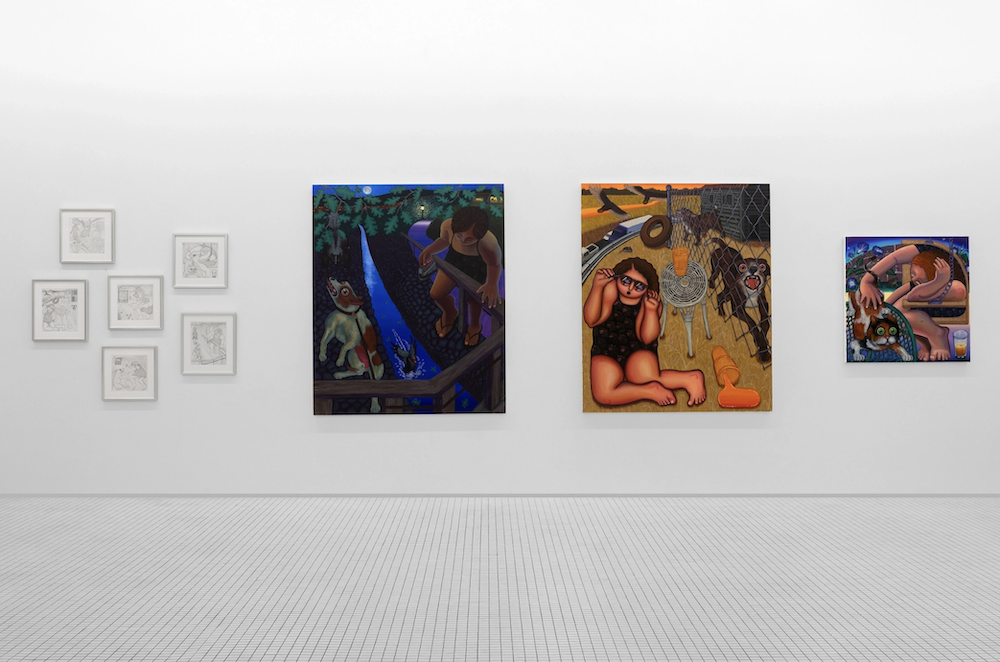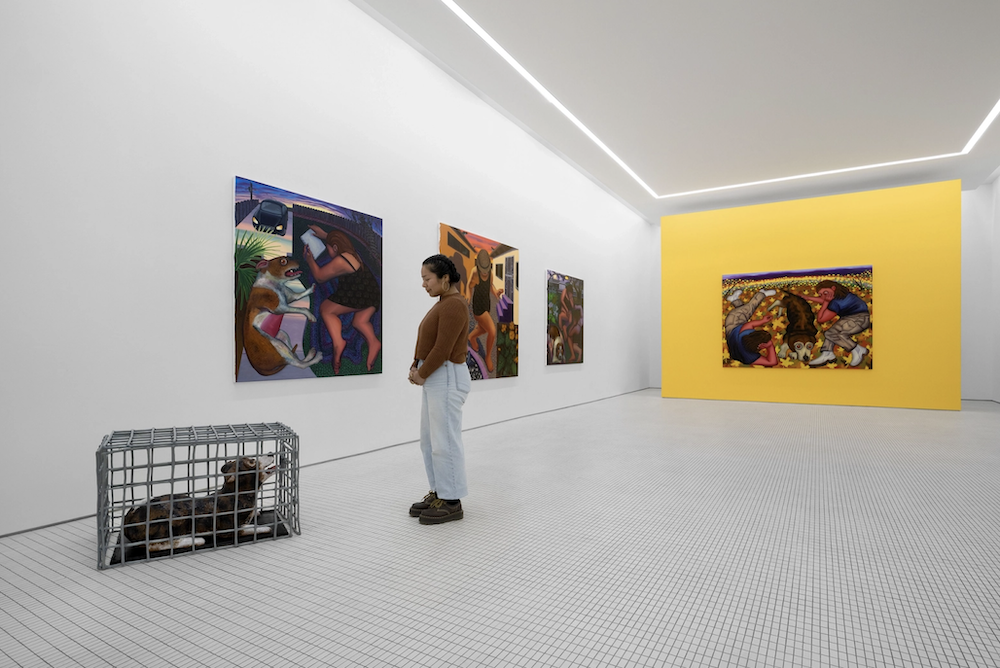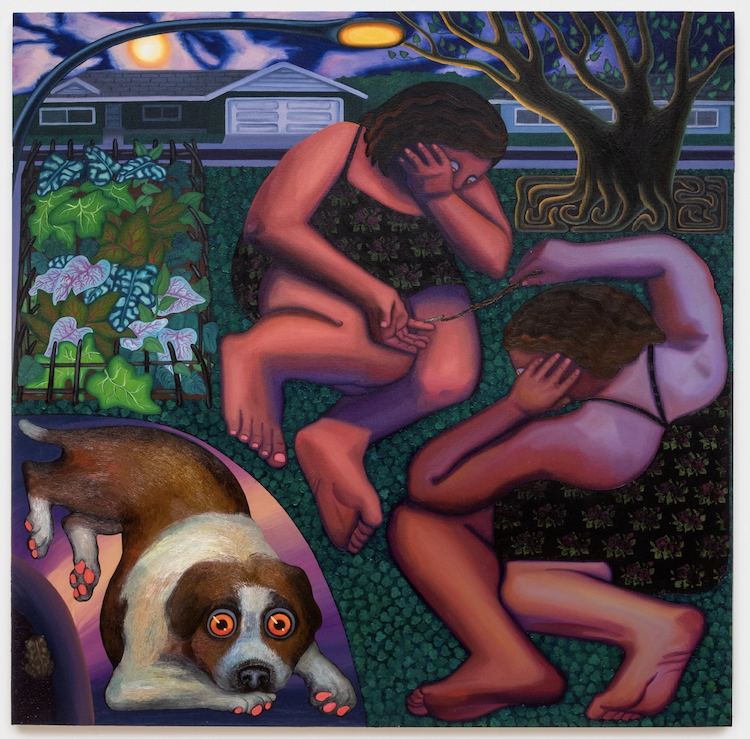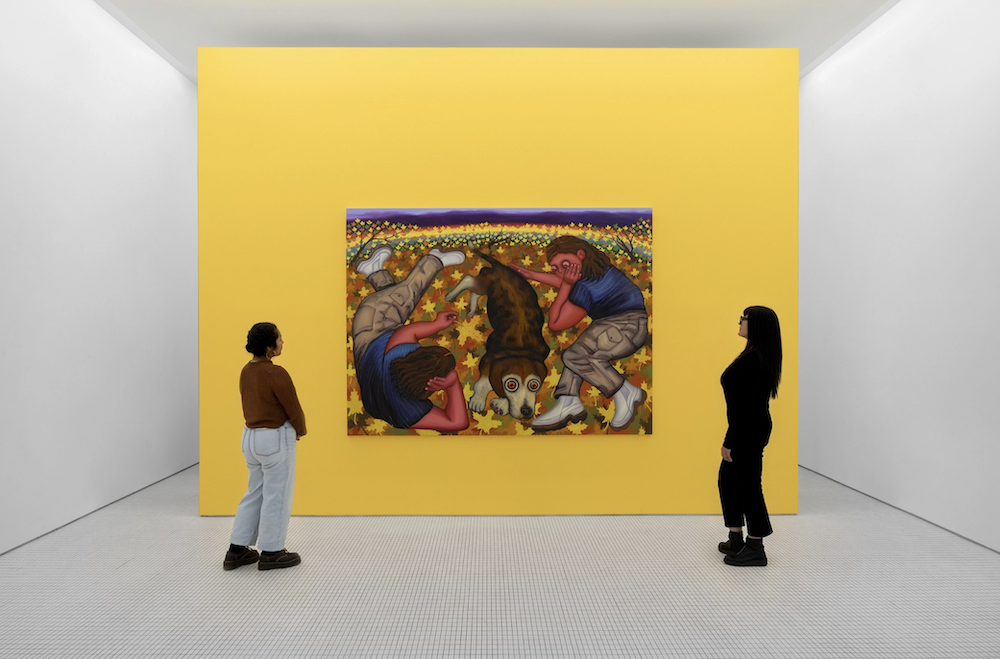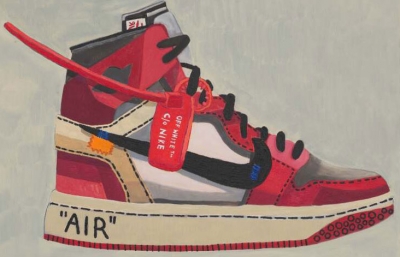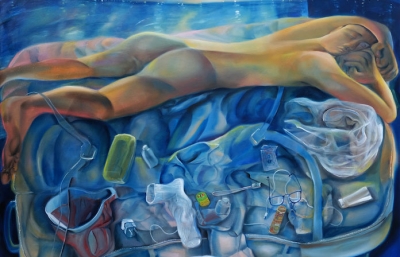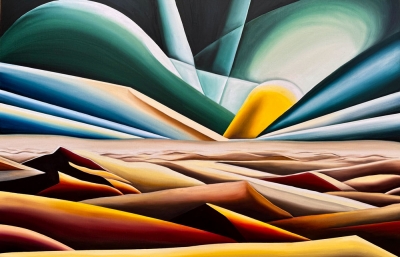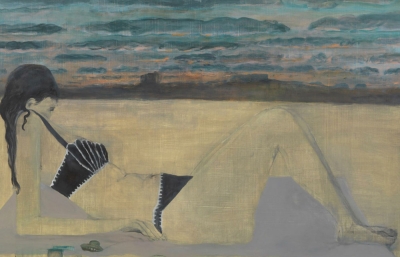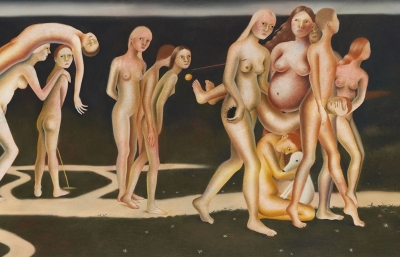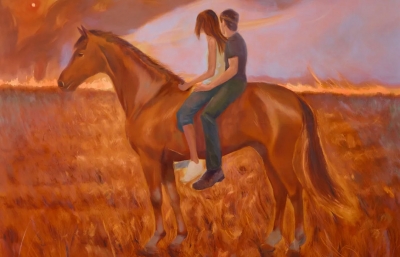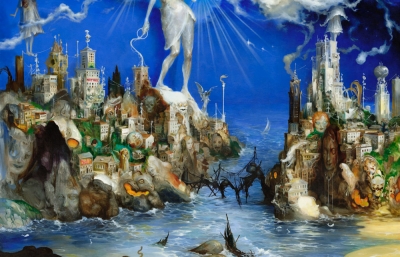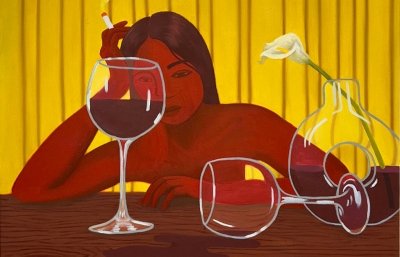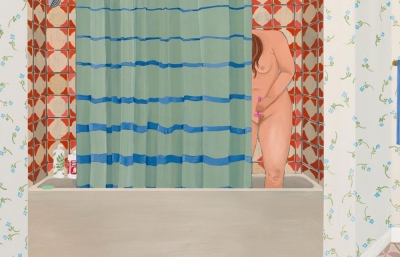Library Street Collective is pleased to present Pollards with New York-based artist Natalie Wadlington, on view through February 21, 2024. The exhibition is the artist’s second solo show with the gallery and will feature a range of work including paintings, drawings and sculpture.
Pollards refers to trees whose upper branches are routinely pruned, an ancient practice that continues today for various uses. In urban settings, pollarding is used to keep ornamental trees at a certain height; in agriculture, it keeps branches young and prohibits them from being grazed by animals, encouraging slow but steady tree growth so as to maintain a somewhat juvenile state. In the exhibition, figures lay low to the ground—hunched near the earth as they interact with animal and plant life—or bend away from the heavy skies above them. Beyond these organic interactions, however, they are hedged on all sides by manmade structures: garden walls, sidewalks, fences, houses. As children play safely in backyards or parks, where reckless growth is checked by the boundaries of safety, Wadlington argues that it is not so different for adults, who, whether encouraged or not, also continue to grow. The paintings, drawings, and sculptures in Pollards explore moments of growth and pruning, of expansion and recoil, and the pollarding of our highest branches as we continue to reach upward and outward.
Though not self-portraits, each of the paintings reference specific places from Wadlington’s past that are tied to developmental moments in her youth. In Park at Night, two female figures sit outside of a suburban home exchanging a caterpillar. This reciprocal act of taking and giving, accompanied by the nocturnal atmosphere, evokes Wadlington’s early teenage years—sneaking out with friends, sharing secrets, getting into innocuous trouble. Courtyard in Sunset is set in the courtyard of her childhood home, where the artist recalls having her first contemplation of mortality. The sunset hues are representative of this universally experienced occurrence that when met, sheds a layer of one's psychological innocence. The moody, yet playful scenes in Wadlington’s canvases seek to capture the emotional ambiguity that accompanies the gradual transition from adolescence to adulthood.
Wadlington’s drawings play a significant role in her practice by allowing her to mine the same subject matter through the granularity and subtlety of texturization that graphite allows. The medium has served as a catalyst in the artist’s continuous exploration of personal narratives, location, and mundane yet emotionally-charged experiences. One sculpture is included in the presentation, which Wadlington created at a recent ceramics residency at The Center for Contemporary Ceramics in CSU Long Beach, California. The work—part of the artist’s ongoing exploration of the material, which she introduced into her practice within the last few years—renders a dog and its crate in a sensitive commentary on the ethics of domestication. By uniting all three bodies of work in one presentation, viewers are granted a comprehensive understanding of the artist’s built environments and the species who inhabit them. Through the lens of personal experience and compassion, Pollards promotes the latest progression in Wadlington’s conceptual studies of the self in relation to the living, breathing world around us.



